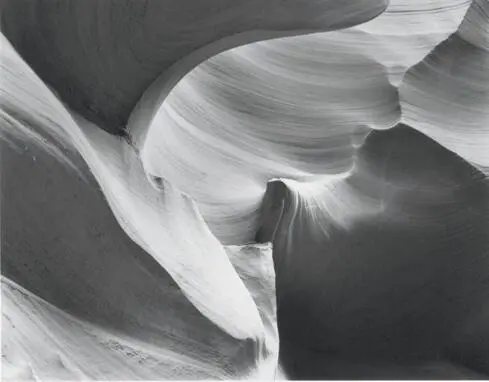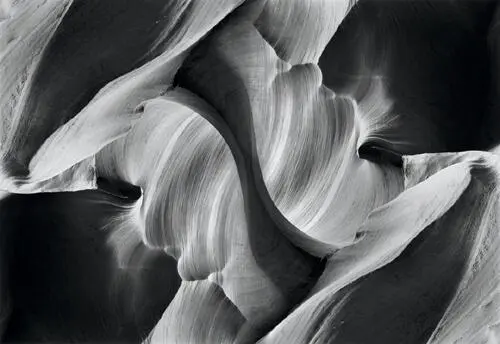Bruce Barnbaum - The Art of Photography - An Approach to Personal Expression
Здесь есть возможность читать онлайн «Bruce Barnbaum - The Art of Photography - An Approach to Personal Expression» весь текст электронной книги совершенно бесплатно (целиком полную версию без сокращений). В некоторых случаях можно слушать аудио, скачать через торрент в формате fb2 и присутствует краткое содержание. Жанр: Старинная литература, на английском языке. Описание произведения, (предисловие) а так же отзывы посетителей доступны на портале библиотеки ЛибКат.
- Название:The Art of Photography: An Approach to Personal Expression
- Автор:
- Жанр:
- Год:неизвестен
- ISBN:нет данных
- Рейтинг книги:5 / 5. Голосов: 1
-
Избранное:Добавить в избранное
- Отзывы:
-
Ваша оценка:
- 100
- 1
- 2
- 3
- 4
- 5
The Art of Photography: An Approach to Personal Expression: краткое содержание, описание и аннотация
Предлагаем к чтению аннотацию, описание, краткое содержание или предисловие (зависит от того, что написал сам автор книги «The Art of Photography: An Approach to Personal Expression»). Если вы не нашли необходимую информацию о книге — напишите в комментариях, мы постараемся отыскать её.
The Art of Photography: An Approach to Personal Expression — читать онлайн бесплатно полную книгу (весь текст) целиком
Ниже представлен текст книги, разбитый по страницам. Система сохранения места последней прочитанной страницы, позволяет с удобством читать онлайн бесплатно книгу «The Art of Photography: An Approach to Personal Expression», без необходимости каждый раз заново искать на чём Вы остановились. Поставьте закладку, и сможете в любой момент перейти на страницу, на которой закончили чтение.
Интервал:
Закладка:
Mt. Whitney has a mesmerizing effect on me. I almost feel a buzz emanating from it when I’m in its vicinity. But it’s deceptively difficult to photograph, rising behind other summits that appear to be even higher. This photograph was made in 1990, but was ignored for 17 years until I discovered that major cropping would convey the power that I had sought for so long .
Figure 15-6. Mt. Whitney, Sunrise
Inwardly and Outwardly Directed Questions
In viewing and responding to photographs, most people miss the point, just as the critics do with Wyeth. All too often, several questions arise that seek information about the making of the photograph.
The first such question is: Where is it? This question applies to a realistic photograph in which things are recognizable. More often than not, the viewer who asks where the scene is located has little genuine interest in the location. However, this is not a meaningful question from an artistic point of view. What does it matter where the photograph was made? The mere fact that this question is asked implies that the photograph is not regarded as a work of art, but rather as a travel inducement.
Mt. Whitney, the highest summit in the contiguous 48 states, has always excited me immensely. But it sits far back in the Eastern Sierra, and others peaks that are not as high seem more dominant at first. I’ve always wanted to make a “portrait” of that mountain that conveys my awe to the viewer. In 2007, I discovered that I had done it effectively 17 years earlier, but I had not carefully studied the contact proof to see that cropping the negative would give the feeling I sought (Figure 15-6). I didn’t make this image as a travel inducement to visit Mt. Whitney, but rather to bring out its strength and deceptive majesty.
The second question people often ask about a photograph is: What is it? This question indicates an abstract image where viewers want to be told what they’re seeing. Does it really matter? Would that question be asked of an abstract painting? Surely not! But because a photograph is real, it is “of something”, people almost always ask what it is.
The final question most often asked is: How was it done? This concerns itself with the technical aspect and is the most pertinent of the three questions, but it still misses the point of artistic value. Each of the questions indicates a superficial interest in the photograph and a lack of real interest in its artistic merits. I feel that each of those questions are outwardly directed. They seek information about the making of the photograph.
From an artistic point of view, inwardly directed questions are far more pertinent. One such question is: What do I see in the photograph? This could apply to either photographic realism or abstraction. It asks how you, the viewer, interpret the work of art. A second such question is: How do I respond to it? Again, this applies to both realism and abstraction. You may respond positively or negatively; you may be confused, amused, angered, or depressed. You may experience any number of other emotional reactions. These questions are independent of the photograph’s location, the subject matter, and the method of production.
I feel that when viewers ask inwardly directed questions, they are truly looking at photography as art. When photographers ask these questions, they are likely to be at the brink of producing fine art.
The outwardly directed questions appear to be unique to photography. They are rarely, if ever, asked of a painting. I doubt that such questions are ever asked of other art forms. Nobody would ask what Beethoven’s Fifth Symphony is, but most people surely would ponder how they are affected by it!
It’s important to remember that the finest art always elicits an emotional response. The response doesn’t come from a print that simply has a good white and a good black, but rather from one that has good content, good composition, and personal meaning . When these three ingredients are made clear through good printing, the photograph will find an appreciative audience.
The Power of Photography
In the first chapter, I discussed my feeling that photography’s inherent realism makes it the most powerful art form in the world today. People generally view a photograph as a literal depiction of reality, even when the image is highly manipulated. This gives the photographer the power to alter reality greatly and still present it as reality, a power that no other art form possesses.
For example, most viewers feel that Ansel Adams’s “Moonrise Over Hernandez” is a literal depiction of the scene under extraordinary conditions. Great numbers of people roam about with their cameras waiting for the right conditions so they can duplicate the drama of that image, and they have no realization that the photograph was heavily manipulated to achieve the effect. They feel that Ansel was fortunate to come upon such spectacular conditions. They feel that he was simply in the right place at the right time. They view the conditions as realistic without recognizing that he greatly aggrandized nature by his method of printing. A painter could hardly hope to have an aggrandized landscape accepted as reality.
Although the perception of a photograph as reality appears to apply solely to realism, that perception also enhances the impact of abstraction. Again, I refer to my slit canyon images. An abstract painting of the canyons would automatically be viewed as artistic imagination, but an abstract photograph imbues the scene with reality—and therefore with heightened meaning and importance. And it goes beyond that. One of my images, Figure 15-7, is a double print of a single negative. It’s printed back-to-back to create the impression of a stone arch within the canyon. Because of the printing method, the image is impossibly symmetrical from a natural point of view. Yet because it’s a photograph, people instinctively respond to it as reality. Most just shake their heads in amazement at the astonishing natural phenomenon! Again, only photography could do this.
Consider another aspect of photography: its universal language. Like music and the other visual arts, it needs no translation. Its message can be felt by anyone worldwide. Photography, like all other visual arts, transcends language and reaches across international boundaries. The work of André Kertesz, Ansel Adams, Joseph Sudek, Mary Ellen Mark, Sabastiao Salgado, Manuel Alvarez Bravo, Brett Weston, and others speaks to the world because the visual language is universal. It would be shortsighted and foolish to underestimate the power of that communication.
In conclusion, it must be said that photography is a very powerful art form. It’s a powerful form of communication. For an individual photograph to achieve the level of art, it must go beyond literal representation. Both realism and abstraction offer avenues toward achieving photographic art, but each must possess the integrity of artistic conviction. Because we are so inundated with photographs in newspapers, magazines, billboards, catalogs, and dozens of other everyday items, the task of the photographer is even greater than that of artists in other media. However, when the level of art is attained, photography becomes the most powerful art form of all. To me, that makes the greater effort worth it.


My eye was attracted to a dark swirl of rock surrounded by an apparent outward spiraling of forms. But the resulting image had no appeal to me (Figure 15-7). I was so displeased with myself that I vowed to do something about it before moving on to any other negative! I’ve never been able to reconstruct how I came upon the idea of double printing the single negative, resulting in the final image (Figure 15-7). Turning the negative 90 degrees to the right, I exposed 95 percent of it while dodging out the right edge, then turned the enlarging paper 180 degrees in the easel and made a second identical exposure. The dark form at the top merges with itself, creating the illusion of an arch within the canyon. It’s complete fiction (hence the name “Phantom Arch”) and one that preceded my multiple negative images by eight years .
Читать дальшеИнтервал:
Закладка:
Похожие книги на «The Art of Photography: An Approach to Personal Expression»
Представляем Вашему вниманию похожие книги на «The Art of Photography: An Approach to Personal Expression» списком для выбора. Мы отобрали схожую по названию и смыслу литературу в надежде предоставить читателям больше вариантов отыскать новые, интересные, ещё непрочитанные произведения.
Обсуждение, отзывы о книге «The Art of Photography: An Approach to Personal Expression» и просто собственные мнения читателей. Оставьте ваши комментарии, напишите, что Вы думаете о произведении, его смысле или главных героях. Укажите что конкретно понравилось, а что нет, и почему Вы так считаете.












